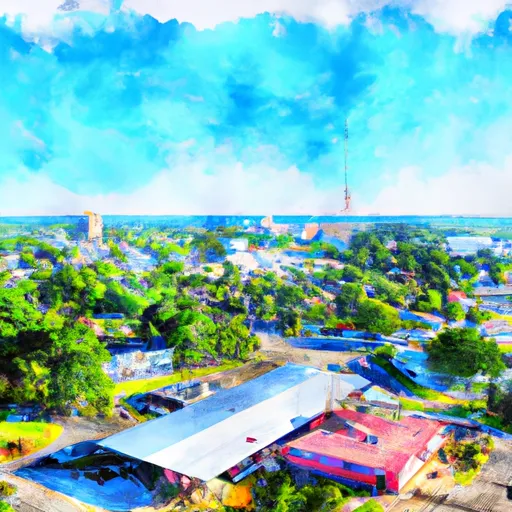-
 Snoflo Premium
Snoflo Premium
Get unlimited access to all our content
With no Ad interruptions! - Start Your Free Trial Login with existing account
Lochloosa
Eden Index
Climate
7.4
•
Recreation
4.5
•
Community
•
Safeguard
4.5/10

Lochloosa, Florida, is a small unincorporated community located in Alachua County. The area is known for its beautiful Lochloosa Lake, which spans over 5,700 acres and offers various outdoor recreation opportunities.
The climate in Lochloosa is subtropical, characterized by hot and humid summers and mild winters. The average temperature ranges from the high 60s to mid-90s Fahrenheit, with rainfall occurring throughout the year. The area experiences occasional hurricanes and tropical storms during the Atlantic hurricane season.
Hydrologically, Lochloosa Lake is connected to Orange Lake through a canal, allowing for diverse aquatic life and water activities. The lake is a popular spot for fishing enthusiasts, particularly for largemouth bass, catfish, and crappie. The surrounding wetlands provide habitat for numerous bird species, making it a great destination for birdwatching and nature photography.
Apart from fishing and birdwatching, Lochloosa offers opportunities for boating, kayaking, and canoeing. Visitors can explore the lake's peaceful waters while enjoying the scenic beauty of the surrounding cypress trees. The Lochloosa Wildlife Conservation Area also provides hiking trails, picnic areas, and opportunities for wildlife observation, enhancing the outdoor experience in this picturesque corner of Florida.
What is the Eden Index?
The Snoflo Eden Index serves as a comprehensive rating system for regions, evaluating their desirability through a holistic assessment of climate health, outdoor recreation opportunities, and natural disaster risk, acknowledging the profound impact of these factors on livability and well-being.
Climate Health Indicator (CHI): 7.4
Lochloosa receives approximately
1308mm of rain per year,
with humidity levels near 89%
and air temperatures averaging around
21°C.
Lochloosa has a plant hardyness factor of
9, meaning
plants and agriculture in this region tend to thrive here all year round.
By considering the ideal temperature range, reliable water supplies, clean air, and stable seasonal rain or snowpacks, the Climate Health Indicator (CHI) underscores the significance of a healthy climate as the foundation for quality living.
A healthy climate is paramount for ensuring a high quality of life and livability in a region, fostering both physical well-being and environmental harmony. This can be characterized by ideal temperatures, reliable access to water supplies, clean air, and consistent seasonal rain or snowpacks.
Weather Forecast
Streamflow Conditions
St. Johns
Area Rivers
St. Johns
Snowpack Depths
St. Johns
Reservoir Storage Capacity
St. Johns
Groundwater Levels
Recreational Opportunity Index (ROI): 4.5
The Recreational Opportunity Index (ROI) recognizes the value of outdoor recreational options, such as parks, hiking trails, camping sites, and fishing spots, while acknowledging that climate plays a pivotal role in ensuring the comfort and consistency of these experiences.
Access to outdoor recreational opportunities, encompassing activities such as parks, hiking, camping, and fishing, is crucial for overall well-being, and the climate plays a pivotal role in enabling and enhancing these experiences, ensuring that individuals can engage in nature-based activities comfortably and consistently.
Camping Areas
| Campground | Campsites | Reservations | Toilets | Showers | Elevation |
|---|---|---|---|---|---|
| Silver Lake - Withlacoochee State Forest | 23 | 78 ft | |||
| Lake Griffin State Rec Area | None | 85 ft | |||
| Hog Island - Withlacoochee State Forest | 20 | 72 ft | |||
| River Jct - Withlacoochee State Forest | 20 | 67 ft | |||
| Ross Prairie | None | 54 ft | |||
| Saddle Creek County Park | None | 111 ft | |||
| Withlacoochee River Park | 10 | 94 ft | |||
| Crooked River - Withlacoochee State Forest | 26 | 72 ft | |||
| Hillsborough River State Park | None | 58 ft | |||
| Cypress Glen - Withlacoochee State Forest | 34 | 72 ft |
Catastrophe Safeguard Index (CSI):
The Catastrophe Safeguard Index (CSI) recognizes that natural disaster risk, encompassing floods, fires, hurricanes, and tornadoes, can drastically affect safety and the overall appeal of an area.
The level of natural disaster risk in a region significantly affects safety and the overall livability, with climate change amplifying these risks by potentially increasing the frequency and intensity of events like floods, fires, hurricanes, and tornadoes, thereby posing substantial challenges to community resilience and well-being.
Community Resilience Indicator (CRI):
The Community Resilience Indicator (CRI) recognizes that education, healthcare, and socioeconomics are crucial to the well-being of a region. The CRI acknowledges the profound impact of these elements on residents' overall quality of life. By evaluating educational resources, healthcare accessibility, and economic inclusivity, the index captures the essential aspects that contribute to a thriving community, fostering resident satisfaction, equity, and social cohesion.

